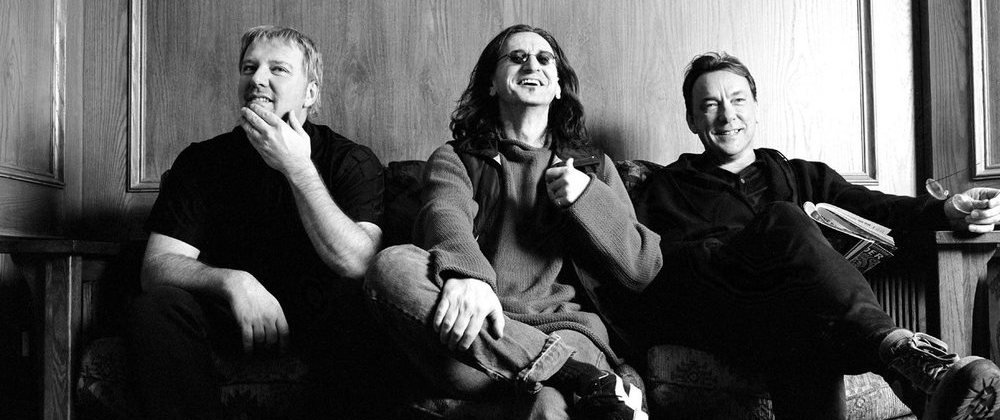RUSH: BEYOND THE LIGHTED STAGE: We Are The Priests Of The Temple Of Prog-Rock
Rest in peace, Neil Peart. He was the drummer andlyricist for Rush, a band who enjoyed three decades of fame in the rock worldby following their own distinctive muse. They were too intellectual for rockcritics but they earned one of the most devoted fanbases in rock fandom by deliveringthe kind of thematic/musical complexity that inspires obsession in a certainbreed of music fan without coming off as self-important. If you become a fan oftheir work, it's likely you will remain a fan for life.
That kind of love is reflected in Rush: Beyond The Lighted Stage, an excellent 2010 documentary byfilmmakers Sam Dunn and Scot McFadyen. All three members of the group -Peart, bassist/vocalist/keyboardist Geddy Lee and guitarist Alex Lifeson - participateon camera, teaming with the directors to unfurl their history in a disciplinedmanner (fitting for a band who were known early on for their tidily-arrangedepic songs).

Rush:Beyond The Lighted Stage shows the viewer how Rush went from aToronto club band to a recording act on a major American label, how they foughtto keep their conceptual ambition intact and the many changes they went throughto keep their music interesting for themselves even as they risked fan interestto do so. You also learn a bit about the group's personal lives, most notablythe tragedies that Peart had to overcome late in life and how he dealt withthem.
However, the film covers this familiar rock-docstructure with a style that keeps it from drifting into tedium. Key to the filmis the way that band members stay likeably self-deprecating no matter whatlevel of their career they are discussing. Indeed, they are quick to give theviewer insight into the misfit teenage years that forged their passion forexploring music in an individualistic manner and are frank about the songs andalbums that they're disappointed with in retrospect. They're also quick to demystify the rock starlife - there's a fascinating section where they discuss how they worked outtheir different ways to relate to fans - and their easygoing style is much morerelatable than the usual mythmaking.

As one might expect, Rush: Beyond The Lighted Stage also includes plentiful commentaryfrom fellow musicians. However, it does not descend to the usual "mutualadmiration society" antics you see in such films. For example, GeneSimmons follows up praise for the bands Zeppelin-esque chops by a bemusedobservation on how the group never took part in Bacchanalian antics back at themotel. It's interesting to note how the subject of Rush brings out the innermusic nerd of its celebrity participants, particularly in a section where theypay tribute to the wonders of Rush's famously complex instrumental "LaVilla Strangiato" or Billy Corgan marveling at how he spent a chunk of histeenage years learning to play "2112" in its entirety. Corgan alsooffers insightful commentary on how the critics fundamentally misunderstoodRush.
Since Rush: Beyond The Lighted Stage is a band-approved documentary, the questioning never gets too difficult: for example, Peart's early fascination with Ayn Rand as source material for lyrics and why he ultimately drifted away from Rand-inspired themes is never really explored. That said, the band's lack of pretension in how they present themselves here carries the day here and the film provides a compelling portrait of why their work's appeal endures. You really see the latter element in a late segment dealing with fans who follow the band: as one man testifies to how he spent his teen years feeling like the protagonist of the Rush song "Subdivisions," you get a feeling for the deep sense of connection that fuels the group's ardent fans.


